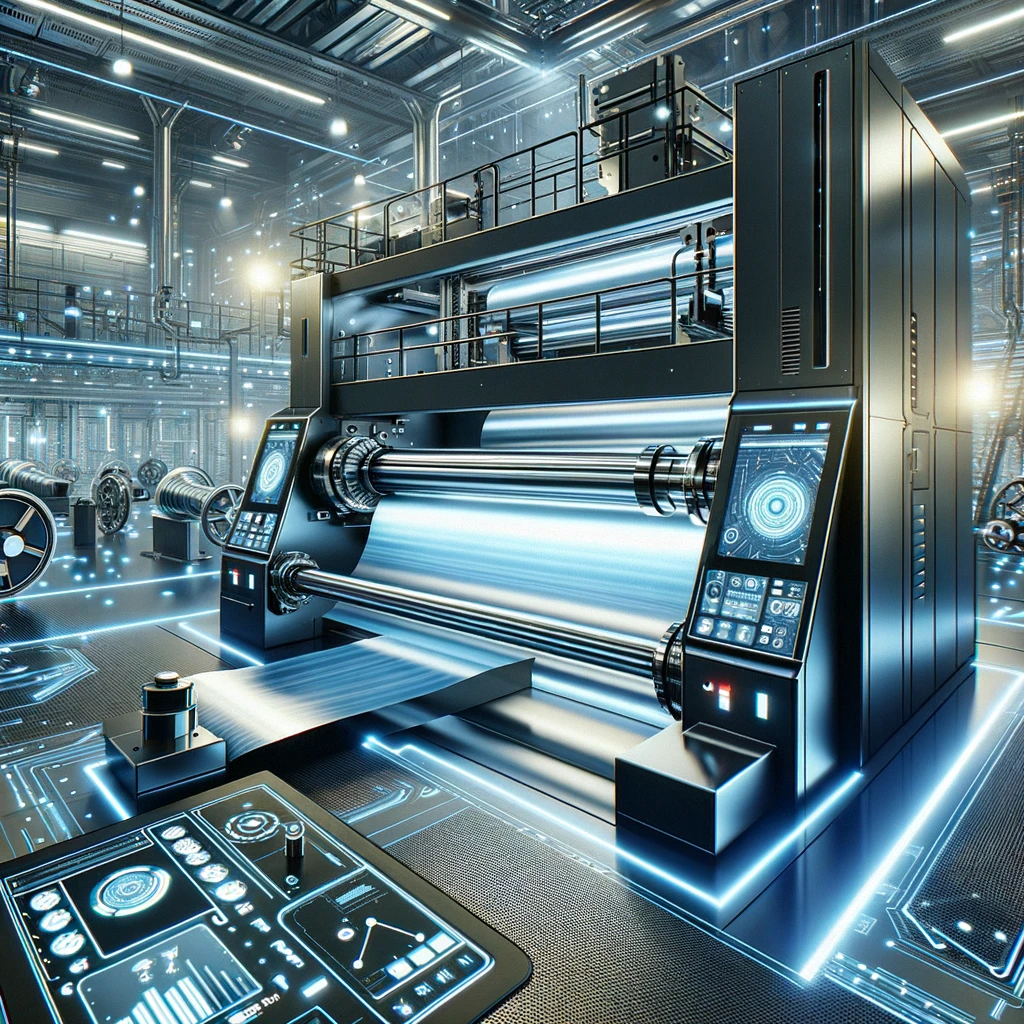Discovering the Latest Innovations in Slitting and Rewinding Technology

Introduction
Slitting refers to the process of cutting large rolls of materials into narrower strips, while rewinding involves winding these strips onto smaller rolls. This technology is widely used in industries such as packaging, printing, and paper production. It is crucial for manufacturers in these industries to stay updated with the latest innovations in slitting and rewinding technology to enhance production efficiency and ensure high-quality outputs. This article explores the advancements in slitting and rewinding technology, the benefits of these innovations, and the potential future trends in the industry.
Introduction to Slitting and Rewinding Technology
Slitting and rewinding technology is a crucial process in various industries, including packaging, printing, and paper production. Slitting involves cutting large rolls of materials into narrower strips, while rewinding focuses on winding these strips onto smaller rolls. This technology allows manufacturers to optimize production and accommodate specific requirements. The latest innovations in slitting and rewinding technology have revolutionized the industry, offering higher speeds, improved accuracy, and enhanced control. These advancements have led to increased efficiency and higher-quality outputs for businesses.
Importance of Keeping up with the Latest Innovations
Keeping up with the latest innovations in slitting and rewinding technology is crucial for businesses in order to stay competitive in the industry. By adopting new technologies, companies can improve production efficiency, enhance quality control, and meet customer demands for faster turnaround times and higher-quality products. Additionally, staying updated with the latest advancements allows businesses to take advantage of new features and capabilities that can lead to cost savings and improved overall performance.

Advancements in Slitting Technology
Advancements in slitting technology have revolutionized the industry by improving productivity and efficiency. High-speed slitting machines can process materials at faster speeds, allowing for increased production output. Laser slitting technology offers precise and clean cuts, reducing material waste. These innovations in slitting technology have allowed businesses to meet customer demands for faster turnaround times and higher-quality products.
1. High-Speed Slitting Machines
High-speed slitting machines have revolutionized the slitting industry by significantly increasing productivity and efficiency. These machines are capable of processing materials at faster speeds, allowing for higher production output. With their advanced features and automation capabilities, high-speed slitting machines enable businesses to meet customer demands for faster turnaround times and increased production capacity.
2. Laser Slitting Technology
Laser slitting technology has emerged as a cutting-edge innovation in the slitting industry. Laser slitting machines utilize a high-powered laser beam to precisely cut through materials. This technology offers numerous benefits such as increased accuracy, reduced waste, and improved cutting speeds. With laser slitting technology, businesses can achieve clean, burr-free cuts and greater flexibility in slitting a wide range of materials.
Innovations in Rewinding Technology
Innovations in rewinding technology have revolutionized the efficiency and precision of the process. Automatic tension control systems ensure consistent tension throughout the rewinding process, reducing material waste and ensuring high-quality results. Inline inspection and defect detection systems detect and address any flaws or defects in the material during rewinding, ensuring only top-quality products are produced. These advancements have greatly improved productivity and quality control in the slitting and rewinding industry.
1. Automatic Tension Control Systems
Automatic tension control systems have revolutionized the rewinding process by ensuring consistent tension throughout. These systems automatically adjust the tension on the material, reducing waste and improving the overall quality of the rewound product. By eliminating fluctuations in tension, automatic tension control systems help to prevent material damage and maintain uniformity. This innovation has greatly improved efficiency and precision in slitting and rewinding operations.
2. Inline Inspection and Defect Detection
Inline inspection and defect detection systems are becoming increasingly sophisticated, allowing for real-time monitoring and identification of defects during the slitting and rewinding process. These systems use advanced sensors and imaging technology to detect and categorize defects such as wrinkles, tears, or misalignments. By identifying defects early on, manufacturers can take immediate corrective actions, reducing waste and improving the overall quality of the final product. Inline inspection and defect detection systems have greatly enhanced productivity and efficiency in the slitting and rewinding industry.
Integration of Automation and Digitalization
Automation and digitalization play a crucial role in the slitting and rewinding industry. Advanced technologies such as artificial intelligence (AI) and machine learning are being integrated into control systems to optimize production processes. This allows for automatic adjustment of settings, reducing human error and increasing efficiency. Additionally, the Internet of Things (IoT) connectivity enables real-time monitoring of production, allowing manufacturers to track performance and identify areas for improvement. The integration of automation and digitalization enhances overall productivity and ensures a more streamlined and efficient slitting and rewinding process.
1. AI and Machine Learning for Optimized Control
The integration of AI and machine learning in slitting and rewinding technology allows for optimized control of the production process. These advanced technologies enable automatic adjustment of settings and parameters, reducing human error and improving efficiency. AI algorithms can analyze real-time data to identify patterns and make predictions for optimal production performance. Machine learning algorithms can also continuously learn and adapt to improve the slitting and rewinding process over time.
2. IoT Connectivity for Production Monitoring
IoT connectivity in slitting and rewinding technology has revolutionized production monitoring. By connecting machines to the internet, manufacturers can gather real-time data on performance, efficiency, and maintenance. This allows for proactive decision-making, predictive maintenance, and remote monitoring. IoT connectivity also enables seamless integration with other digital tools and systems for comprehensive production management. With IoT, manufacturers can optimize productivity and reduce downtime, leading to increased profitability.
Benefits of the Latest Innovations
The latest innovations in slitting and rewinding technology offer numerous benefits for manufacturers. These advancements result in increased production efficiency due to higher speeds and more precise cutting capabilities. The introduction of automatic tension control systems and inline inspection and defect detection ensures improved quality control. With the integration of AI, machine learning, and IoT connectivity, manufacturers can optimize productivity, reduce downtime, and make proactive decisions for enhanced profitability. Overall, these innovations revolutionize production monitoring and management in the slitting and rewinding industry.

1. Increased Production Efficiency
The latest innovations in slitting and rewinding technology have significantly increased production efficiency in manufacturing processes. With high-speed slitting machines and laser slitting technology, manufacturers can achieve faster cutting speeds and precision. The integration of automatic tension control systems eliminates manual adjustments and ensures consistent and efficient rewinding. These advancements result in reduced production time, improved productivity, and overall cost savings for manufacturers.
2. Improved Quality Control
With the latest innovations in slitting and rewinding technology, manufacturers can now achieve improved quality control in their production processes. The integration of inline inspection and defect detection systems allows for real-time monitoring and identification of any defects or abnormalities in the materials being processed. This results in enhanced product quality, reduced waste, and increased customer satisfaction. Manufacturers can also benefit from the use of AI and machine learning algorithms to optimize control parameters and ensure consistent quality throughout the production process. Overall, these advancements in quality control contribute to higher production standards and better end products.
“Our team utilizes the latest technology to ensure that all of our slitting and rewinding jobs are completed accurately and on-time.” – Scott Korn (CEO)
Conclusion
In conclusion, the latest innovations in slitting and rewinding technology offer significant benefits to manufacturers. High-speed slitting machines and laser technology enable faster and more precise operations. Automatic tension control systems and inline inspection systems enhance product quality. The integration of AI and machine learning optimize control parameters, while IoT connectivity allows for real-time monitoring. These advancements improve production efficiency and quality control, making them essential for staying competitive in the industry. With continuous advancements, the future holds even more possibilities and trends in slitting and rewinding technology.
Summary of the Latest Innovations in Slitting and Rewinding Technology
The latest innovations in slitting and rewinding technology have revolutionized the industry. High-speed slitting machines and laser technology have enabled faster and more precise operations. Automatic tension control systems and inline inspection systems have enhanced product quality. The integration of AI and machine learning optimizes control parameters, while IoT connectivity allows for real-time monitoring. These advancements have greatly improved production efficiency and quality control, making them essential for manufacturers to stay competitive in the industry.
Future Possibilities and Trends in the Industry
The slitting and rewinding industry holds numerous possibilities for future innovations and advancements. One of the key trends is the integration of robotics and automation, which will further enhance production efficiency. Additionally, there is a growing focus on sustainability, with the development of eco-friendly materials and processes. The industry is also expected to benefit from advancements in data analytics and smart technology, allowing for more precise control and analysis of production processes. These trends will continue to shape the future of slitting and rewinding technology, making it an exciting field to watch.